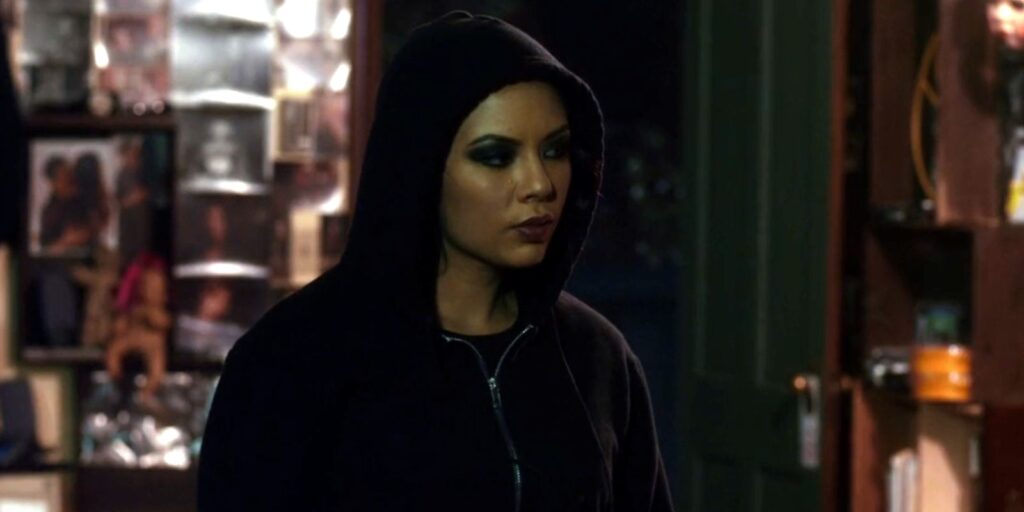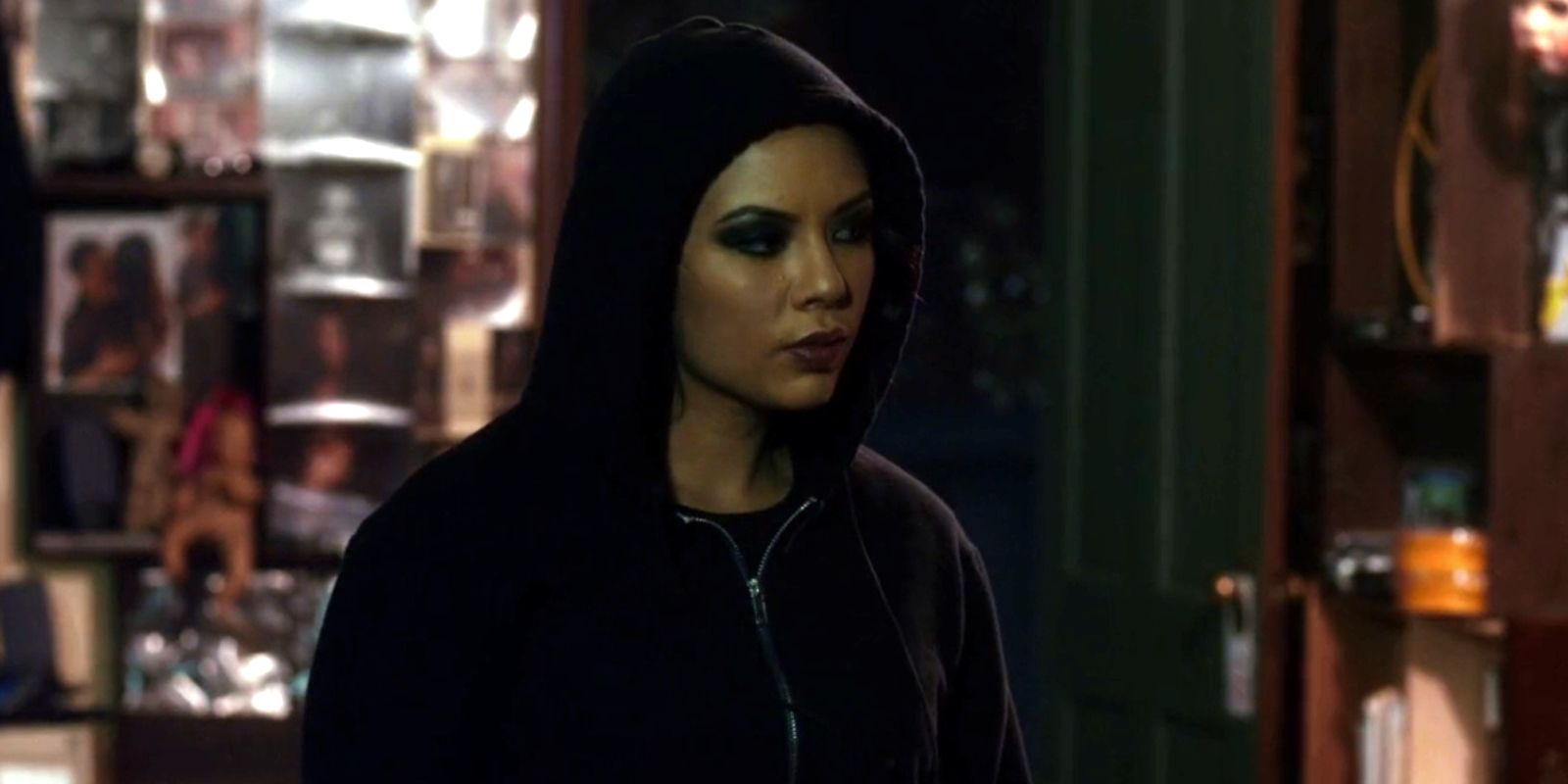
Is Mona a Villain or Victim in Pretty Little Liars? Unpacking Her Complex Character
Mona Vanderwaal. The name alone conjures a whirlwind of opinions among Pretty Little Liars (PLL) fans. From her initial portrayal as the quirky, underestimated sidekick to Hanna Marin, to her shocking reveal as the original ‘A’, Mona’s character arc is arguably one of the most complex and debated in the entire series. But the central question remains: **Is Mona a** villain, or a victim of circumstance? This article delves deep into Mona’s actions, motivations, and the psychological factors that shaped her journey in Rosewood, aiming to provide a nuanced perspective on this controversial character.
The Rise of ‘A’: Mona’s Villainous Turn
Initially, Mona’s actions are undeniably villainous. After being tormented by Alison DiLaurentis and her clique before Alison’s disappearance, Mona sought revenge. She masterminded an elaborate game, tormenting Alison’s friends, Hanna, Aria, Emily, and Spencer, with cryptic messages and dangerous stunts under the guise of ‘A’. Her motives stemmed from a deep-seated insecurity and a desire for power and control, fueled by the years of bullying and marginalization she endured. She wanted to make them feel as insignificant as she felt. The extent of her manipulation and the psychological trauma she inflicted on the Liars cannot be easily dismissed. Therefore, early **Mona** is, from the perspective of the Liars, an antagonist.
- Mona’s manipulative tactics were designed to isolate and terrify the Liars.
- Her motivations stemmed from past trauma and a desire for control.
- The consequences of her actions had a lasting impact on the Liars’ mental health.
A Victim of Bullying and Mental Instability
However, painting **Mona** solely as a villain is an oversimplification. It’s crucial to consider the context of her upbringing and the psychological factors that contributed to her actions. Before Alison’s disappearance, **Mona** was an easy target for Alison’s cruel pranks and social exclusion. This constant bullying left deep scars, fostering feelings of inadequacy and resentment. Furthermore, it’s revealed later in the series that **Mona** suffers from mental health issues, specifically borderline personality disorder (BPD). BPD is characterized by unstable moods, difficulty maintaining relationships, and impulsive behavior, all of which are evident in **Mona’s** actions. Her mental state, combined with the years of bullying, created a perfect storm that led her down a dark path. The show hints at this early on, suggesting **Mona** was always vulnerable.
The Gray Areas: Intentions and Consequences
Even after being unmasked as ‘A’, **Mona’s** storyline becomes increasingly complex. She undergoes psychiatric treatment and initially appears to be reformed. However, her involvement in subsequent ‘A’ related events blurs the lines between victim and perpetrator. While she often claims to be helping the Liars, her methods are often questionable and her motives remain ambiguous. Is she genuinely trying to atone for her past actions, or is she simply seeking to manipulate the situation to her advantage? This ambiguity is what makes **Mona’s** character so compelling. The ambiguity surrounding **Mona** makes her difficult to trust.
Mona’s Evolving Alliances
Throughout the series, **Mona** forms alliances with various characters, sometimes aligning herself with the Liars, and other times working against them. These shifting allegiances further complicate her character. For example, she feigns her own death to infiltrate the ‘A’ Team, risking her own life to gather information. However, her actions are often driven by a desire to be one step ahead, making it difficult to discern her true intentions. Her actions are often reactive, a response to threats she perceives. [See also: Understanding the Motives of A in Pretty Little Liars]
The Impact of ‘A’ on Mona’s Identity
The role of ‘A’ profoundly impacts **Mona’s** sense of self. It becomes a defining aspect of her identity, blurring the lines between her true personality and the persona she adopted. Even after being unmasked, she struggles to shed the ‘A’ label, and her past actions continue to haunt her. This raises questions about the long-term consequences of bullying and the challenges of overcoming a damaged identity. The show explores this theme through **Mona’s** ongoing struggle for acceptance and redemption. Is she destined to always be seen as ‘A’, or can she truly move on? The actions of ‘A’ changed **Mona** forever.
Redemption and the Question of Forgiveness
As the series progresses, **Mona** seeks redemption for her past actions. She actively works to help the Liars uncover the truth behind the various ‘A’ iterations, risking her own safety in the process. This willingness to put herself in harm’s way suggests a genuine desire to atone for her mistakes. However, the question of whether she truly deserves forgiveness remains a point of contention among fans. Can the Liars, and the audience, ever fully forgive **Mona** for the pain she caused? The show grapples with this complex moral dilemma, exploring the limits of forgiveness and the possibility of rehabilitation. Forgiving **Mona** is a difficult task for the Liars.
Mona’s Acts of Selflessness
There are several instances where **Mona** demonstrates genuine selflessness, putting the needs of others before her own. For example, she sacrifices her own happiness to help Hanna pursue her dreams. These acts of kindness suggest that there is more to **Mona** than just manipulation and revenge. They highlight her capacity for empathy and her desire to be a better person. These moments of selflessness humanize **Mona**, making her more relatable and sympathetic. [See also: The Psychological Impact of Bullying on Teenagers]
The Final Verdict: A Complex Anti-Hero
Ultimately, **Mona** Vanderwaal is neither a pure villain nor a complete victim. She is a complex anti-hero, a product of her environment and her own internal struggles. Her actions are often morally ambiguous, blurring the lines between right and wrong. While she is responsible for the pain she inflicted on the Liars, it’s important to acknowledge the factors that contributed to her behavior. By understanding her motivations and the psychological forces at play, we can gain a more nuanced appreciation for this controversial character. **Mona** represents the shades of gray that exist within us all. Her journey from social outcast to ‘A’ and beyond is a testament to the power of resilience, the complexities of forgiveness, and the enduring impact of past trauma. The character of **Mona** remains a topic of discussion.
The Legacy of Mona in Pretty Little Liars: Perfectionists
The spin-off series, Pretty Little Liars: The Perfectionists, further explores **Mona’s** character and her quest for redemption. In this series, **Mona** moves to Beacon Heights University and becomes embroiled in another mystery. Her past actions continue to haunt her, and she grapples with the challenge of proving herself to others. This spin-off provides further insight into **Mona’s** psyche and her ongoing journey towards self-acceptance. It is clear that **Mona** struggles with her past. The spin-off allows for a deeper exploration of **Mona’s** character.
Is Mona truly good?
The question of whether **Mona** is truly good is left open-ended, prompting viewers to consider the complexities of human nature and the possibility of change. Mona’s actions are often driven by a desire to protect those she cares about, even if her methods are questionable. This highlights the moral ambiguities that define her character and make her such a compelling figure in the Pretty Little Liars universe. Whether **Mona** is good or bad is a matter of perspective. This is a question the series leaves the viewer to consider. It is difficult to definitively say **Mona** is a villain.
Conclusion: Mona – More Than Just ‘A’
In conclusion, **Mona** Vanderwaal’s character in Pretty Little Liars is a multifaceted exploration of victimhood, villainy, and the potential for redemption. While her actions as ‘A’ cannot be excused, understanding her motivations and the psychological factors that shaped her behavior allows for a more nuanced perspective. **Mona** is more than just ‘A’; she is a complex character who embodies the gray areas of human morality. Her story serves as a reminder that people are not always what they seem, and that even those who have caused harm are capable of change. The character of **Mona** is a complex and thought-provoking addition to the Pretty Little Liars narrative.
Mona, a fan favorite
Despite her complicated history, **Mona** remains a fan favorite, celebrated for her intelligence, resourcefulness, and unwavering loyalty to those she cares about. Her character challenges viewers to question their own perceptions of good and evil and to consider the complexities of human behavior. **Mona’s** popularity is a testament to the show’s ability to create compelling and nuanced characters that resonate with audiences on a deep level.

